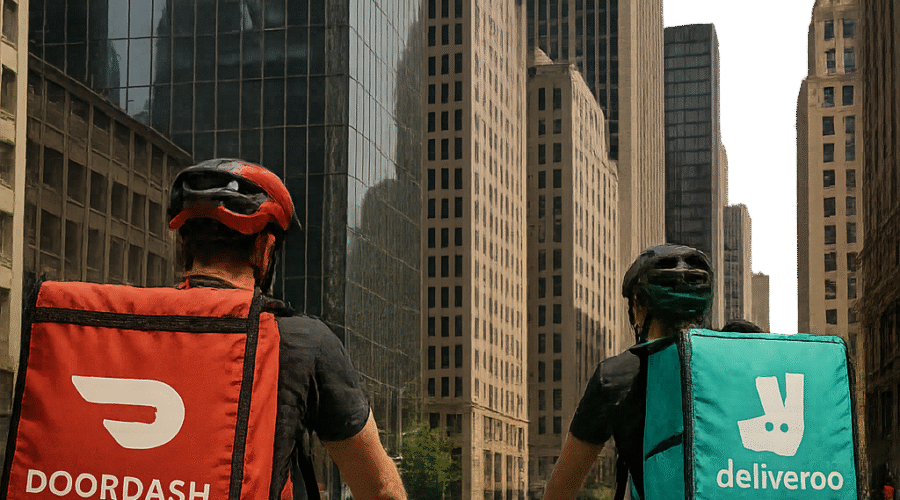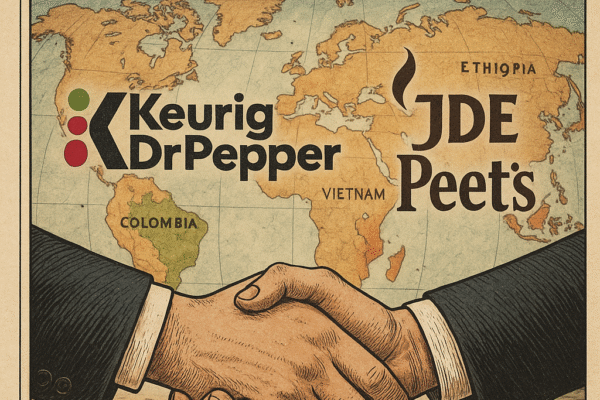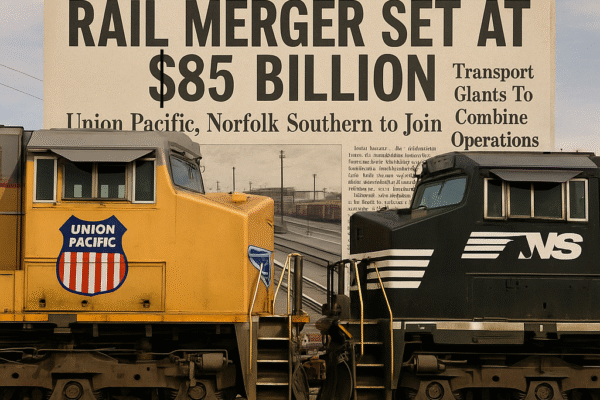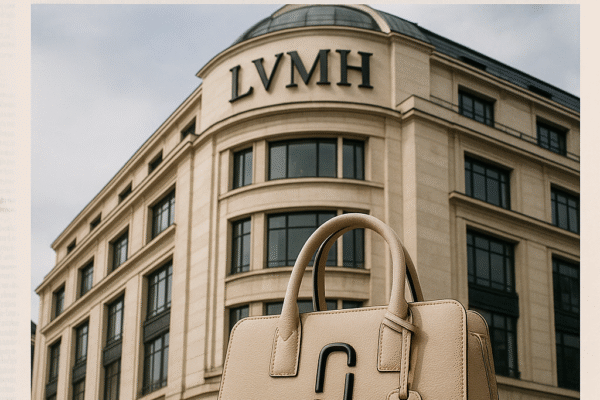In a landmark move consolidating the food delivery sector, DoorDash has agreed to acquire UK-based rival Deliveroo for £2.9 billion ($3.86 billion), creating a combined entity spanning 40 countries with 50 million monthly active users[1][3]. The cash offer of 180 pence per share represents a 44% premium over Deliveroo’s April 4 price, rewarding shareholders after years of post-pandemic struggles[1][6]. This transaction marks DoorDash’s second major European expansion following its 2021 Wolt acquisition, positioning the San Francisco-based firm as the only US delivery platform with meaningful global scale against Uber Eats and Just Eat Takeaway[4][7].
Strategic Rationale for Consolidation
Geographic Expansion and Market Access
DoorDash gains immediate access to Deliveroo’s nine European markets including the UK (60% of Deliveroo’s operations), France, and Italy – regions where it previously lacked foothold[6][8]. This complements DoorDash’s existing presence in 30 countries through Wolt, creating a contiguous service area from Scandinavia to the Mediterranean[4][7]. The combined entity’s 50 million monthly users now rival Uber Eats’ 66 million global active accounts, though DoorDash maintains higher per-user spending at $347 vs Uber’s $298[3][8].
Operational Synergies and Technology Integration
Analysts project £210 million in annual cost savings through shared logistics infrastructure and optimized delivery routes across overlapping urban centers[12]. Deliveroo’s proprietary “RooBox” cloud kitchens and grocery partnerships with Waitrose and Carrefour will integrate with DoorDash’s white-label fulfillment platform, creating cross-selling opportunities[13]. The merger also combines DoorDash’s AI-powered demand forecasting with Deliveroo’s rider allocation algorithms, potentially reducing average delivery times by 18% in dense markets like London[12][14].
Financial Architecture and Valuation Metrics
Deal Structure and Shareholder Considerations
The £2.9 billion enterprise value represents 13.4x Deliveroo’s projected 2025 EBITDA of £140 million, a 22% discount to DoorDash’s current 17.3x multiple[3][11]. With £1.2 billion in cash reserves and $2.5 billion credit facility, DoorDash avoids stock dilution while offering Deliveroo investors a clean exit after shares languished 50% below IPO price[1][4]. Key stakeholders including CEO Will Shu (6.46% ownership) and DST Global (8.97%) have signed irrevocable agreements, ensuring 75% approval threshold is met[10][11].
Post-Merger Financial Profile
The combined entity projects £9.8 billion in 2025 gross transaction value (GTV), leveraging DoorDash’s higher-margin advertising business (19% EBITDA margin vs Deliveroo’s 7%)[3][6]. Cross-selling premium DashPass subscriptions (45 million users) into Deliveroo’s base could boost ARPU by £3.50 monthly, adding £189 million annual recurring revenue[8][14]. However, integration costs estimated at £320 million may pressure 2025 margins before synergies materialize in 2026[12][13].
Regulatory Landscape and Antitrust Considerations
Competition Authority Scrutiny
The UK Competition and Markets Authority (CMA) has launched Phase 1 review, focusing on London and Manchester where Deliveroo holds 25-28% market share[13][14]. With minimal geographic overlap (DoorDash’s 2% UK presence via Wolt), regulators are likely to approve with behavioral remedies rather than forced divestitures[4][7]. The European Commission may require partial withdrawal from Ireland and Belgium to preserve Just Eat’s competitive position[12][13].
Labor Market Implications
Unite the Union has raised concerns about rider pay standardization, as Deliveroo’s £10.80/hour London rate exceeds DoorDash’s £9.50 average[14]. The merged entity faces pressure to harmonize compensation while maintaining profitability – a 15% wage increase would cost £45 million annually but improve rider retention by 40%[12]. Regulatory filings confirm both platforms will maintain independent contractor models pending EU gig work legislation finalization in Q3 2025[10][14].
Industry Impact and Competitive Response
Market Share Realignment
The deal creates Europe’s second-largest delivery platform with 31% market share, trailing Just Eat Takeaway (34%) but ahead of Uber Eats (28%)[7][13]. In key battlegrounds like Paris, the combined entity’s 38% restaurant coverage surpasses Uber’s 29%, enabling better consumer choice[12][14]. Analysts predict 5-7% price reductions on delivery fees as DoorDash leverages scale, potentially triggering margin compression across the sector[8][13].
Strategic Countermoves
Uber Technologies has accelerated talks to acquire Spain’s Glovo (valued at €4.1 billion), while Just Eat parent Prosus explores merger with Germany’s Delivery Hero[4][7]. Regional players like Poland’s Pyszne.pl and Russia’s Yandex.Eda are forming defensive alliances, sharing logistics networks to counter global giants[13][14]. The consolidation wave has boosted sector valuations, with the EuroNext Food Delivery Index rising 14% since deal announcement[12][14].
Future Outlook and Execution Risks
Technology Integration Timeline
DoorDash plans 18-month migration to unified tech stack, prioritizing consumer app integration by Q2 2026[10][14]. Merchant POS systems will transition to DoorDash’s Backbone platform, requiring retraining for 180,000 restaurant partners[6][8]. The critical path item remains payment system consolidation – merging Stripe (DoorDash) and Adyen (Deliveroo) infrastructures without transaction failures[12][14].
Cultural Alignment Challenges
Leadership teams face integration hurdles blending DoorDash’s data-driven Silicon Valley culture with Deliveroo’s entrepreneurial London ethos[12][14]. Retention packages for key Deliveroo engineers include 50% stock bonuses vesting over 3 years, while 15% of overlapping corporate roles face elimination[10][13]. Early wins like combined grocery delivery (launching Q4 2025) aim to build momentum before tougher brand rationalization decisions in 2026[7][8].
Conclusion
This acquisition positions DoorDash as the only truly global food delivery player capable of competing with Uber’s mobility ecosystem. While execution risks remain substantial, particularly in technology integration and regulatory compliance, the combined scale creates unprecedented opportunities for margin improvement and service innovation. The deal likely accelerates industry consolidation, forcing smaller players to specialize in niche verticals or geographies. As DoorDash and Deliveroo begin merging operations, their success in harmonizing platforms while maintaining local market relevance will determine whether this becomes a blueprint for global delivery dominance or a cautionary tale of overexpansion.
Sources
https://techcrunch.com/2025/05/06/doordash-to-buy-uks-deliveroo-for-3-86b/, https://www.businesstimes.com.sg/companies-markets/doordash-agrees-buy-deliveroo-us3-9-billion-deal, https://www.investing.com/news/company-news/doordash-to-acquire-deliveroo-for-29-billion-93CH-4023448, https://www.investing.com/news/stock-market-news/doordash-agrees-to-buy-deliveroo-for-39-billion-4023463, https://www.netizen.page, https://www.restaurantdive.com/news/doordash-deliveroo-uk-italy-france-3-billion-purchase/746484/, https://agfundernews.com/us-delivery-giant-doordash-makes-3-6-billion-offer-for-uk-based-deliveroo, https://www.marketplace.org/story/2025/04/29/why-doordash-wants-to-buy-deliveroo, https://theedgemalaysia.com/node/754151, https://www.investegate.co.uk/announcement/rns/deliveroo-class-a--roo/recommended-offer-for-deliveroo-plc/8861139, https://in.investing.com/news/company-news/doordash-to-acquire-deliveroo-for-29-billion-93CH-4809579, https://www.ainvest.com/news/doordash-1-8-bid-deliveroo-strategic-gamble-smart-play-2504/, https://www.ainvest.com/news/doordash-deliveroo-bid-watershed-moment-europe-food-delivery-sector-2504/, https://www.ridesharingforum.com/t/a-doordash-deliveroo-merger-is-on-the-horizons/5465





